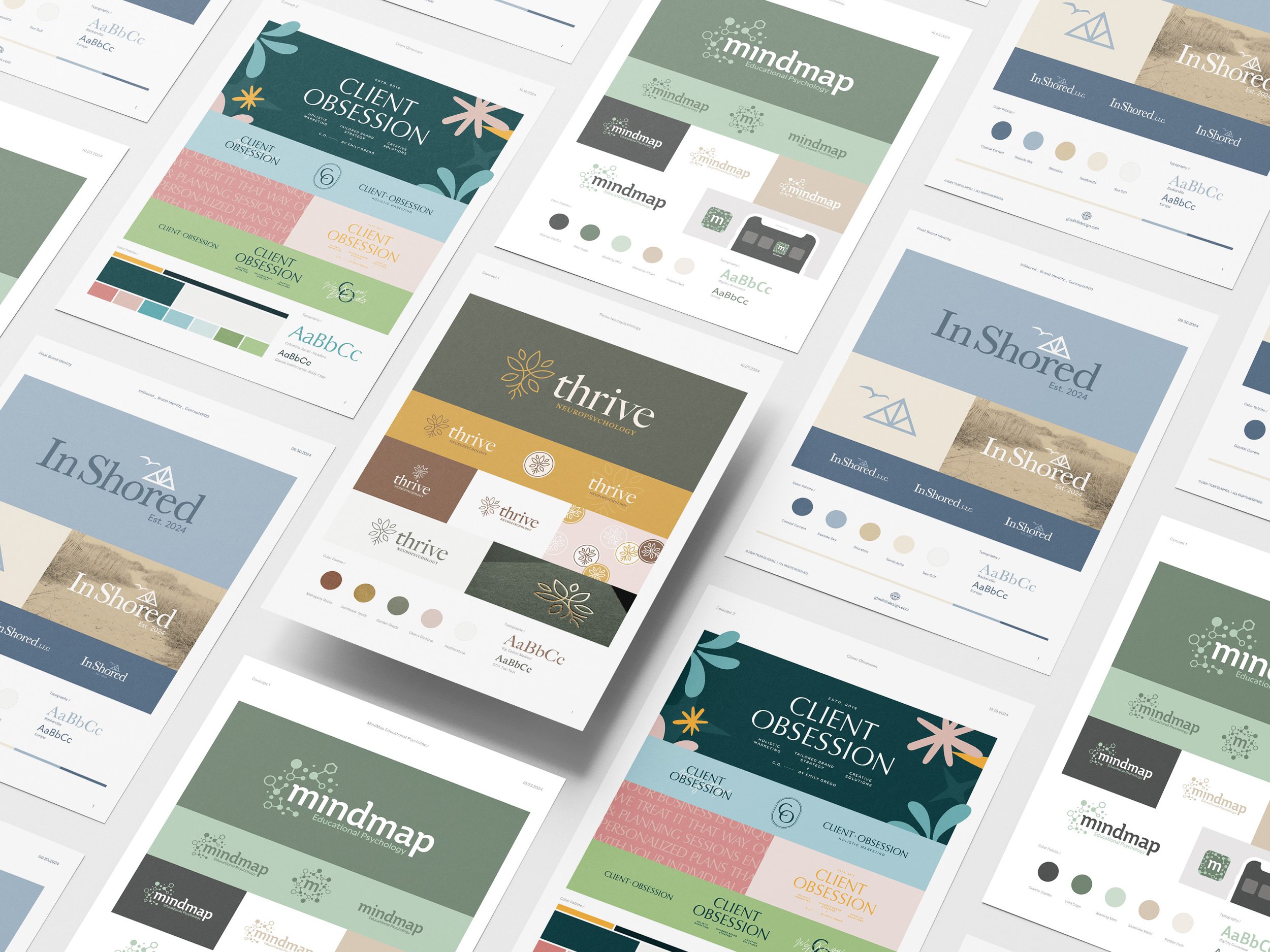Our Process for Brand Identity and Logo Development
Creating a logo and brand identity that perfectly represents a client’s vision and resonates with their target audience is both an art and a science. One essential tool in this process is the mood board. By using mood boards, we establish a visual language that guides the entire design journey.
Below, we’ll walk through the step-by-step process of how we use mood boards to collaborate with clients and bring their brand to life.
Step 1: Research & Development
The journey begins with a discovery meeting with the client. This initial step is all about information-gathering and setting the stage for a successful collaboration. During this meeting, we dive deep into:
The Client’s Vision: We ask introductory questions to understand their goals, values, and aspirations. What do they want their logo and brand identity to convey?
The Company’s History: Learning about the company’s background and services provides valuable context.
Audience Perception: How do they want to be viewed by their customers? What emotions or ideas should their brand evoke?
Color Palette Preferences: We explore whether they envision their brand using cool or warm tones, bold or neutral shades, or something in between.
This session is not only about gathering facts but also looking for hints of inspiration that will shape the brand’s visual direction.
Step 2: Mood Board Concepting
With the insights gained from Step 1, we create three preliminary mood boards. Each mood board serves as a distinct option to help narrow down the brand’s direction. These mood boards include:
Color Palettes: Carefully curated color schemes that align with the client’s preferences.
Typography Samples: A selection of fonts that reflect various tones and styles.
Logo Examples: Inspirational logos sourced from the internet to illustrate potential design approaches.
Once the mood boards are prepared, we schedule a meeting with the client to review them. This discussion is pivotal:
Listening to Feedback: We pay close attention to the client’s reactions, noting preferences, dislikes, and any emerging ideas.
Collaborative Refinement: Ideas are often ping-ponged between the client and the designer, leading to a clear vision for the brand.
By the end of this step, we finalize the brand’s direction with a comprehensive mood board that features:
A defined color palette
Selected typography styles
Inspirational logo examples that align with the chosen aesthetic
Step 3: Identity Concept
Now, it’s time to bring the brand to life. Using the finalized mood board as a blueprint, we create three distinct brand identity concepts. These concepts share common elements—such as the color palette and typography—but differ in logo designs and other details.
Each concept includes:
Primary Logo: The centerpiece of the brand’s visual identity.
Secondary Logo: A complementary design for alternative uses.
Icon Design: A simplified logo element for versatile applications.
Photography Examples: Images that reflect the brand’s mood and style.
Typography and Color Palette: Reinforcing the visual direction.
This is where the client gets to see their brand take shape. These concepts allow them to envision how their identity will look across various platforms and materials.
Step 4: Final Brand Identity
With the client’s input, we make the final selection and fine-tune the chosen concept. Adjustments are made as needed to ensure every detail aligns with the client’s expectations and goals.
The result? A cohesive brand identity that tells the client’s story and represents their passion. This final product includes:
Polished logos
Defined color and typography guidelines
A visual system ready to roll out across all platforms and materials
Conclusion






